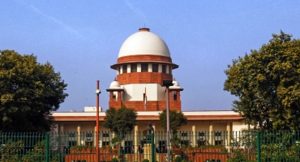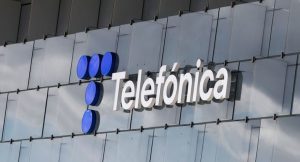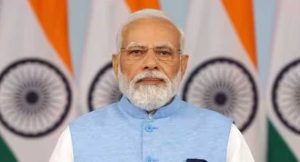The surging number of Covid-19 cases in southeast Asian countries like Singapore and Hong Kong raised alarms in India, with health authorities conducting a review meeting and asserting that the situation in the nation was ‘under control’.
Experts from the National Centre for Disease Control, Emergency Medical Relief division, Disaster Management Cell, Indian Council of Medical Research and central government hospitals, held a review meeting on Monday under the chairpersonship of the director general of health services.
An official source, said, “The meeting concluded that the current Covid-19 situation in India remains under control. As of May 19, 2025, the number of active Covid-19 cases in India stands at 257, a very low figure considering the country’s large population. Almost all of these cases are mild, with no hospitalisation required.”
However, the Union health ministry continues to proactively monitor the situation closely and ensure that appropriate measures are in place to safeguard public health.
The rise in Covid-19 cases in southeast Asia are mostly triggered by the JN.1 variant, a descendant of the Omicron BA.2.86 variant. As per the World Health Organisation, the JN.1 variant has around 30 mutations, and among them are LF.7 and NB.1.8, the two most common versions among the recently reported cases.
How many cases India has reported since May 12?
Covid cases in India: As per the data from the ministry of health and family welfare, India reported 164 cases since May 12. Kerala reported the highest number of cases at 69, followed by Maharashtra at 44 and Tamil Nadu at 34.
Karnataka reported 8 new cases of Covid-19, while Gujarat accounted for 6 and Delhi 3. Haryana, Rajasthan, and Sikkim reported one new case each.
The ministry noted that the active cases in Kerala, however, was at 95, adding that “further reconciliation of mortality figures is ongoing”.
Currently, India has a total of 257 active cases of Covid-19. As many as 4,45,11,240 persons have been discharged and 5,33,666 deaths have been recorded, official data showed.
2 hospital deaths spark concern in Mumbai
The deaths of two Covid-19 patients at the civic-run KEM hospital in Mumbai sparked concerns over Covid-19. However, the hospital has clarified that the deaths were not related to coronavirus, but were due to co-morbidities.
The Brihanmumbai Municipal Corporation (BMC) had said in a statement that deaths of two Covid-infected patients, a 14-year-old girl and a woman aged 54, were reported at KEM hospital in Parel. However, hospital authorities said that they were due to serious diseases like nephrotic syndrome with hypocalcemic seizures and cancer.
BMC clarified that there was no need for people to panic. It further said that Covid-19 is now considered as an endemic and ongoing health problem and very few cases of the virus are being found.
“The Health Department of the BMC is constantly monitoring the spread of Covid-19. From January 2025 to April 2025, the number of Covid-19 patients has been found to be very low. But since the beginning of May, there have been some cases of Covid-19. However, the BMC administration is appealing to citizens not to panic in this regard,” the civic body’s statement read.
BMC also said that it has made arrangements for the treatment of Covid patients, such as earmarking special beds and rooms in the municipal hospitals in the city. The capacity will immediately be increased if deemed necessary, it added.
Covid cases in Singapore, Hong Kong
Southeast Asian countries like Singapore and Hong Kong are reporting an uptick in Covid-19 cases, with authorities urging people to keep vigil and take precautions.
In a press release, the controller of Hong Kong’s Centre for Health Protection Edwin Tsui said, “After the resumption of normalcy, Hong Kong experienced cycles of active periods of Covid-19 in every six to nine months. We expect the activity level of Covid-19 to remain at a higher level for at least the next few weeks.”
As per Nation Thailand, there were 31 severe cases of Covid-19 in Hong Kong in the week ending May 3, which is a 12-month peak in such cases.
In Singapore, the ministry of health and the communicable diseases agency said that the estimated number of Covid-19 cases stood at 14,200 for the week of April 27 to May 3, rising from previous week’s figure of 11,100, the Straits Times reported.
Last week, Singapore’s health minister Ong Ye Kung had posted on Facebook that periodic Covid-19 waves are “expected throughout the year”.
Meanwhile, Korea Disease Control and Prevention Agency extended its seasonal Covid vaccination period last month by two months, i.e., until end of June. It advised people aged 65 and above to get inoculated with the JN.1 shot from Pfizer Inc. and BioNTech SE.
Reportedly, the Chinese Centre for Disease Control and Prevention reported that positive test rates for Covid-19 in hospitals more than doubled in the five weeks leading up to May 4.
WHO votes in favour of global pandemic agreement
Amid the rising concern over Covid cases in Asia, members of the World Health Organisation voted in favour of a global pandemic agreement.
After Slovakia called for a vote on Monday, 124 countries voted in favour of the global treaty on improving pandemic preparedness.
“Governments from all over the world are making their countries, and our interconnected global community, more equitable, healthier and safer from the threats posed by pathogens and viruses of pandemic potential,” said Director-General of the World Health Organization, Tedros Adhanom Ghebreyesus.
The draft addresses structural inequities on drugs and vaccines after lessons were learned following the Covid-19 pandemic. It will be formally adopted on Tuesday during a plenary session at the World Health Assembly in Geneva. Hindustan Times









